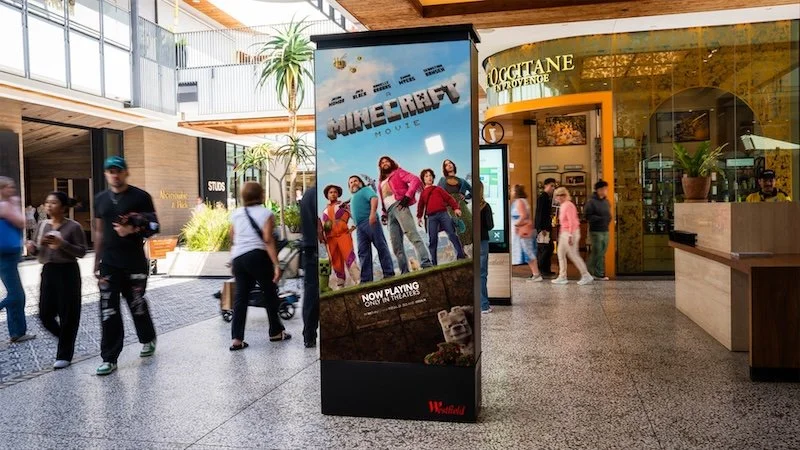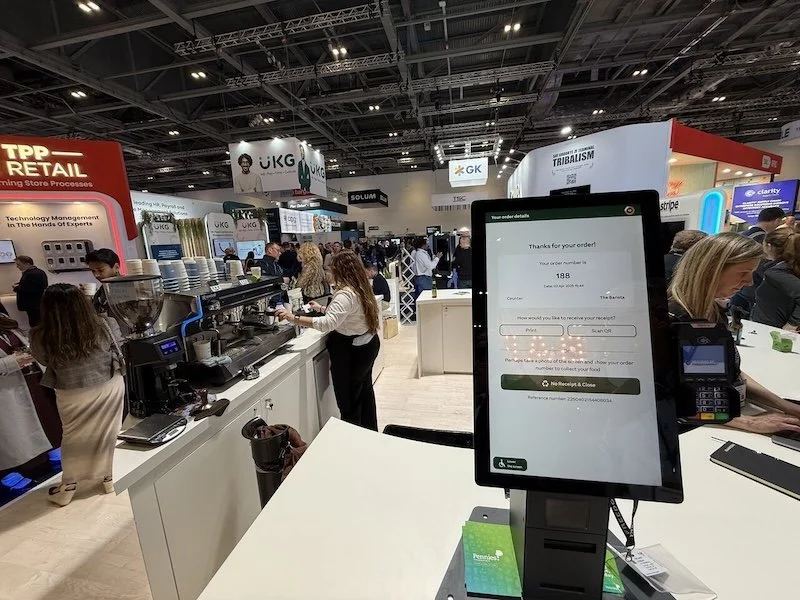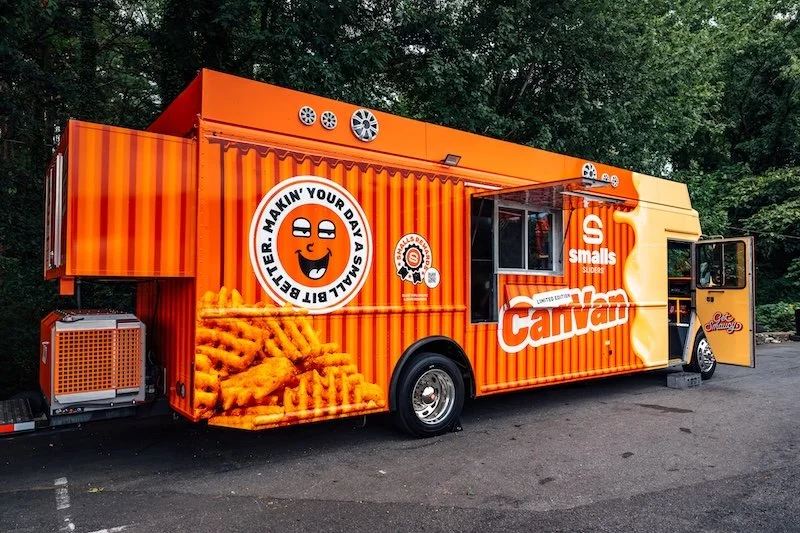Leveraging technology to elevate customer satisfaction in retail: trends and innovations
In today’s competitive retail landscape, customer satisfaction is more important than ever. With so many opportunities available, customers expect outstanding experiences based on what they are looking for.
From a personalised shopping perspective to a seamless omnichannel experience, tech innovations are redefining the retail industry completely.
That being said, let’s dive deeper into this article to learn more about the latest trends and innovations in retail technology, and find out how they are impacting customer satisfaction and promoting long-term success.
Technology’s Role in Retail Customer Satisfaction
Technology has become a cornerstone of modern retail, driving efficiency, personalisation, and increasing engagement. Technology is now more important than ever and let’s find out how it increases customer satisfaction:
● Personalisation: Customers appreciate experiences that fulfill their individual preferences. 71% of customers expect companies to deliver personalised interactions. Advanced analytics and artificial intelligence (AI) allows retailers to analyse purchasing behaviours, provide personalised product recommendations, and tailor marketing campaigns.
● Omnichannel experiences: Seamlessly integrating online and offline channels and ensuring a consistent customer journey. Regardless of where customers interact with your brand, they expect a consistent customer journey on product availability, pricing, and your service quality.
● Efficiency and convenience: Technology helps in providing you with real-time inventory updates, mobile payment options, and self-checkout kiosks.
Call center workforce management systems play a crucial role in ensuring customer service teams are adequately staffed and ready to provide timely support, which is essential for maintaining a seamless shopping experience.
Tech innovations help customers save time in their shopping experience, and this keeps customers happy over time. After all, nobody wants to waste too much time shopping.
Trends and Innovations in Retail Technology
While technology does strongly impact how customers feel when shopping, let’s take a deeper look at some trends and innovations in the industry itself.
1. Partnering with High Quality Vendors
When you are operating in the retail industry, it’s always important to know how to manage a vendor relationship. Vendor relationship management (VRM) is a buyer centric business discipline.
Moreover, VRM systems serve as software tools that you can use for monitoring and developing vendor partnerships. Effective vendor relationships are important for implementing and maintaining cutting-edge technologies. Managing vendor partnerships play an important role in the retailer’s ability to satisfy customers, and here are only some perks of a successful vendor relationship management process:
● Risk mitigation
● Improves performance
● Improves rate negotiation
● Reduces time consumption
● Risk assessment
2. The Role of PCB Manufacturing in Retail Technology
Printed Circuit Boards (PCBs) are fundamental to numerous technological advancements in the retail sector. They serve as the backbone of electronic devices, from self-checkout kiosks and digital signage to IoT enabled systems and AR/VR devices. Ensuring high quality PCB manufacturing is crucial for the smooth functioning of these technologies.
Why Quality PCB Manufacturing Matters
Partnering with a reliable PCB manufacturing service helps retailers maintain operational efficiency and deliver seamless customer experiences. A trustworthy PCB partner offers:
● Custom Solutions: Tailored designs that meet the specific requirements of retail technologies.
● High Volume Production: Scalability to support the growing technological demands of large retail chains.
● Rigorous Quality Assurance: Comprehensive testing to ensure durability and functionality, reducing downtime.
● Rapid Turnaround: Fast production cycles to keep up with innovation and market demands.
Real-World Impact on Customer Satisfaction
Consider self-checkout kiosks. The smooth operation of these systems depends on advanced PCBs that ensure reliable processing and connectivity. Similarly, IoT sensors embedded with high quality PCBs monitor inventory levels in real-time, preventing stockouts and improving customer experiences.
By investing in exceptional PCB manufacturing services, retailers can enhance their technology driven operations and stay competitive in the ever evolving market.
3. Artificial intelligence (AI) and machine learning (ML)
AI powered tools are transforming retail operations and how customers engage with each other. These applications include:
● Chatbots: Providing instant customer support and answering queries 24/7, and assisting customers in the buying process.
● Recommendation engines: Many platforms use AI powered algorithms to suggest products based on browsing habits.
● Predictive analytics: Retailers can predict sales trends and prepare for seasonal demand spikes.
● Predictive modeling: ML algorithms determine which promotions will resonate with specific customer segments. AI analyses customer feedback and social media to gauge brand perception and improve strategies.
● Fraud prevention: AI makes sure that all online and in-store transactions are secure. It detects unusual patterns in transaction data to identify and prevent fraud.
● Eco-friendly recommendations: Suggesting sustainable alternatives to customers. AI systems analyze production and sales data to prevent overproduction.
Overall, AI and ML are reshaping the retail industry, allowing businesses to deliver a personalised and seamless experience while improving operational efficiency. As these technologies continue to evolve, they continue to drive innovation and keep retailers ahead of the curve, meeting customer expectations in a competitive market.
4. Augmented Reality (AR) and Virtual Reality (VR)
AR and VR bridge the gap between physical and digital retail by offering immersive experiences. Retailers use both these technologies to give customers a real-life virtual experience and see how a product feels when they use it.
AR and VR technologies allow retailers to engage with customers directly, which strongly impacts buying behaviors. Interactive AR overlays guide employees through tasks like product demonstrations or shelf stocking.
You also have smart mirrors that are equipped with AR and they allow shoppers to virtually try on clothes or accessories in-store. AR-powered displays offer additional product details, reviews, or tutorials scanned with a smartphone.
Then we have VR that is used to train staff members in customer service, product assembly, or store operations in a risk free environment. VR allows customers to browse in a virtual store, interact with products, and make purchases all from the comfort of their own home.
Otherwise, both AR and VR gather data on customer preferences and behaviour, allowing much more personalised marketing strategies. Combined with AI, these technologies create dynamic and tailored experiences that adapt to real-time individual customer needs.
5. Internet of Things (IoT)
IoT connects systems and devices, allowing much smarter retail operations. IoT adds three benefits to the retail industry:
● Inventory management: You have the “Smart Shelves” technology that is equipped with sensors, which monitor stock levels and notify staff when items need to be replaced. This helps prevent inventory stock-out or false claims associated with your inventory. IoT enabled tags also include real-time RFID track inventory across supply chains, reducing loss and optimising stock levels.
● Personalised shopping experiences: Small IoT devices can send personalised offers and notifications to customers before they visit your store, regardless if it’s physical or online.
● Checkout automation: IoT enabled systems like Amazon Go, for example, use cameras to track purchases, allowing customers to instantly walk out without having to wait in line if they visit a physical store.
Moreover, you have many other IoT devices such as smart homes, smartwatches, and even IoT sensors that monitor vehicle performance and optimise delivery routes.
IoT continues to evolve, and with the latest advancements in 5G connectivity, edge computing, and AI integration, its integration is making devices much faster and smarter. This means that in the future, IoT will make purchasing experiences even more personalised and connect buyers even more than ever.
6. Voice Commerce
Voice commerce has been on a rise lately and has increased by more than 300% in the past two years.
This allows customers to search for products, place orders, and manage purchases through voice commands. The very first case where voice commerce is used is for reordering products. If you are frequently purchasing groceries or household essentials, you can easily reorder them with a voice command.
Secondly, voice commerce can be used for product search. Shoppers can ask any type of questions that are associated with their product purchase. For example, “What are the best phone cases to purchase under $20?”
Thirdly, voice assistants are great for providing product information, handling queries, and assisting customers with cancellations and returns.
You can integrate voice commerce with payment systems like Apple Pay or Google Pay to make the payment process much easier.
7. Sustainability and Green Technology
Customers are valuing sustainability more than ever and this is encouraging retailers to invest in green technologies as well, which is beneficial since it reduces environmental footprint and meets growing demands for eco-friendly operations.
Many retailers are starting to use electric delivery vehicles and partnering with logistics companies to reduce emissions and offer more green options. Moreover, online stores holding inventory in warehouses are starting to use renewable energy and are equipped with energy efficient systems.
However, some challenges that might bother retailers are the amount of investment required at the beginning. This includes installing renewable energy systems or retrofitting stores.
Next, we have technology integration which includes aligning green tech with existing infrastructure that requires careful planning.
Last but not least, the biggest challenge is to find sustainable suppliers. Many retailers might struggle with this part, but if you are firmly focused on it, you should clarify this part from the beginning before you make a deal.
Technology Is Becoming a Game-Changer in the Retail Industry
Technology is a game-changer in the retail industry, offering endless opportunities to increase customer satisfaction. By embracing these trends such as AI, AR, IoT, and blockchain, retailers can take over personalised and efficient experiences that increase customer loyalty and delight.
As the retail landscape continues to evolve, the key to being successful in the long term is to remain agile, customer focused, and open to innovation. Retailers who take over technology not only meet customer expectations but can also set new benchmarks in the industry itself.
About The Author:
Tony Ademi is a freelance SEO content and copywriter. He has been in the writing industry for three years and has managed to write hundreds of SEO optimised articles. Moreover, he has written articles that have ranked number one on Google. Tony’s primary concern when writing an article is to do extensive research and ensure that the reader is engaged until the end.


































Continue reading…